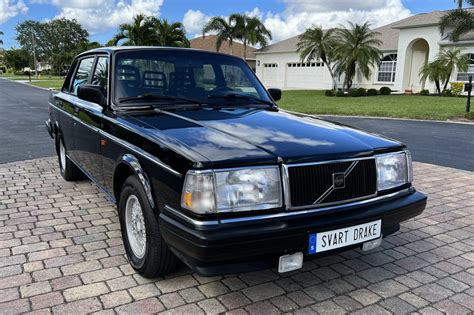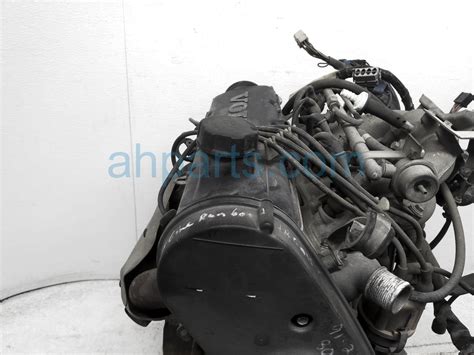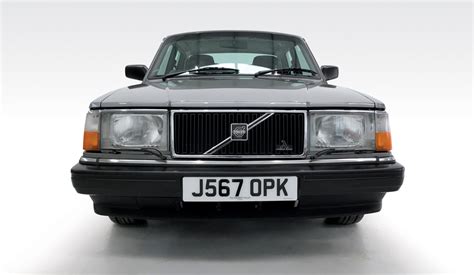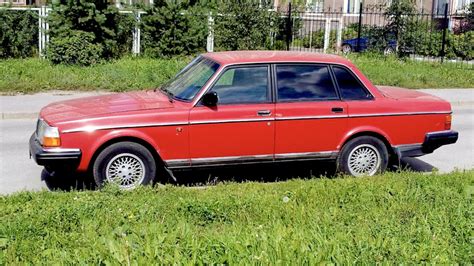1991 Volvo 240 problems

The Volvo 200 Series (or 240 and 260 Series) is a range of mid-size cars produced by Swedish company Volvo Cars from 1974 until 1993, with more than 2.8 million total units sold worldwide. Like the Volvo 140 Series (1966 to 1974), from which it was developed, it was designed by Jan Wilsgaard.
The series overlapped production of the Volvo 700 Series (1982 to 1992). As the 240 Series remained popular, only the 260 Series was displaced by the 700 Series, which Volvo marketed alongside the 240 for another decade. The 700 was replaced by the 900 Series in 1992, a year before the 240 was discontinued. Production of the 240 ended on 14 May 1993, after nearly 20 years, with the basic platform and architecture lasting 27 years, if the production run of the original 140 Series is aggregated.
History
The Volvo 240 and 260 series were introduced in the autumn of 1974, and was initially available as six variations of the 240 Series (242L, 242DL, 244DL, 244GL, 245L and 245DL) and two variations of the 260 Series (264DL and 264GL). The 240 Series was available as a sedan (with two or four doors) or a station wagon, however, the 260 Series was available as a coupé (262C Bertone), two-door sedan, four-door sedan, or station wagon. The 200 looked much like the earlier 140 and 164, they shared the same basic body shell and were largely identical from the cowl rearward. However, the 200 incorporated many of the features and design elements tried in the Volvo VESC ESV in 1972, which was a prototype experiment in car safety. The overall safety of the driver and passengers in the event of a crash was greatly improved with very large front and rear end crumple zones. Another main change was the new engines offered, which were of an overhead cam design based on the earlier B20. The 260 series also received a V6 engine in lieu of the 164's inline-six.
The 200 Series had MacPherson strut-type front suspension, which increased room around the engine bay, while the rear suspension was a modified version of that fitted to the 140 Series. The steering was greatly improved with the introduction of rack-and-pinion steering, with power steering fitted as standard to the 244GL, 264DL and 264GL, and there were some modifications made to the braking system (in particular the master cylinder).
The front end of the car was also completely restyled with a "shovel nose" which closely resembled that of the VESC prototype vehicle – that being the most obvious change which made the 200 Series distinguishable from the earlier 140 and 160 Series. Other than all the changes mentioned above, the 200 Series was almost identical to the 140 and 160 Series from the bulkhead to the very rear end. In 1978, a facelift meant a redesigned rear end for sedans, with wraparound taillights and a trunk opening with a lower lip. The dashboard was derived from the safety fascia introduced for the 1973 model year 100 Series - the main change for the 200 Series was the adoption of slatted "egg crate" style air vents in place of the eyeball style vents used in the 140/160 and the square clock. All models were available with a choice of four-speed manual or a three-speed automatic transmission. Overdrive was also optional on the manual 244GL, while a five-speed manual gearbox was optional on the 264GL and 265GL.
In the autumn of 1975 (for the 1976 model year in America), the 265 DL estate became available alongside the existing range, and this was the first production Volvo estate to be powered by a six-cylinder engine. The choice of gearboxes was also improved, with overdrive now available as an option in all manual models except the base-model 242L and 245L. As before, a three-speed automatic was optional in every model. The B21A engine gained three horsepower; a new steering wheel and gearknob were also introduced.
At the 1976 Paris Motor Show Bertone first showed the stretched 264 TE, a seven-seat limousine on a 3,430 mm (135.0 in) wheelbase, although it had entered production earlier. The raw bodies were sent from Sweden to Grugliasco for lengthening, reinforcing, and finishing. Carl XVI Gustav of Sweden used one, as did much of East Germany's political leadership.
For 1977 the B19A engine with 90 PS (66 kW) replaced the B20A in most markets, although the old pushrod type soldiered on for another two years in some places. This is also the year that the sportier 242 GT arrived.
In 1978 the grille was altered, now with a chrome surround. Rear view mirrors were now black, while the front seats were changed as were the emblems, while interval wipers were introduced. 1978 models were also the first 240s to receive a new paint formula, to help solve the severe rust problems in previous model years.
The 1979 model year brought a full facelift front and rear, the most obvious change being the adoption of flush fitting square headlamps on the DL or rectangular headlamps on the GL, GLE in place of the recessed circular units. The sedans received new wraparound rear lamp clusters and a restyled leading edge to the trunk lid, while the rear of the wagons remained unchanged. The GLE was added while the L was cancelled, and the six-cylinder diesel arrived late in the year. For 1980, the sporty GLT arrived, replacing the GT. For 1981 there was yet another new grille, while the station wagons received new, wraparound taillights. The B21A gained some four horsepower, now 106 PS (78 kW), while the carburetted B23A with 112 PS (82 kW) was introduced in some markets. The Turbo arrived, while six-cylinder models now had a more powerful 2.8-liter engine. 1981 also saw the dashboard altered significantly, which a much larger binnacle in order to bring the radio and clock within the driver's line of sight. The instrument pod itself, which had been unaltered since the 1973 model year 100 Series, was also redesigned.
Incremental improvements were made almost every year of the production run. One of the major improvements was the introduction of the oxygen sensor in North America in late 1976 (1977 models), which Volvo called Lambda Sond and developed in conjunction with Bosch. It added a feedback loop to the Jetronic fuel injection system already in use, which allowed fine-tuning of the air and fuel mixture and therefore produced superior emissions, drivability and fuel economy.
For the 1983 model year, Volvo dropped the DL and GLE labels, selling the cars simply as 240s. In the domestic Swedish market, the 240 could be had with a 2.1 or 2.3-liter engine (more options were available in export), but the bigger engine always came coupled with a five-speed transmission and tinted windows. The 1983s also received wider side trim and all models had the larger taillights introduced on the previous year's GLT model. A B23E-engined GLE variant was also added (not available with two doors). Buyers protested against the lack of grades and they returned for 1984. A new manual gearbox also arrived for 1984, while a four-speed automatic option was available in the GL. The GLT and Turbo versions received a taller grille.
While Volvo had been planning to discontinue the 200-series since the early 1980s, the design kept selling well and Volvo provided steady updates. In late 1991, for the 1992 model year, it received 160 detail improvements including changes to the heater controls, heated rear view mirrors, and revised front seats. For the final, 1993 model year, air conditioning units were upgraded to use R-134a rather than the ozone-depleting R-12 (Freon).
About one-third of all 240s sold were station wagons, which featured very large cargo space of 41 cubic feet (1.2 m3). They could be outfitted with a rear-facing foldable jumpseat in the passenger area, making the wagon a seven-passenger vehicle. The jumpseat came with three-point seat belts, and wagons were designed to have a reinforced floor section, protecting the occupants of the jumpseat in the event of a rear-end collision.
A 1993 Volvo 240DL was driven by IKEA founder Ingvar Kamprad, who stopped driving it when he was told the car was too dangerous due to outdated safety design two decades later.
The last 200 produced was a blue station wagon built to the Italian specification and named the "Polar Italia", currently displayed at the Volvo World Museum. It was manufactured the 14th May 1993.

Social links
Common 1991 Volvo 240 problems
The Volvo 240, produced from 1975 to 1993, is known for its robustness and longevity. However, there are several common issues that owners have reported, particularly with the 1991 model.
- Heater Blower Motor: The heater blower motor, located in the deepest confines of the dash, is known for its powerful heating capabilities. However, it can take 3-4 hours for an experienced mechanic to replace, and even longer for beginners. The motor is of decent quality, but if it fails, it may need to be replaced one or more times during the ownership of the car.
- Air Intake Hose & Air Box Thermostats: The large plastic accordion style intake hose that connects the air mass meter to the intake manifold can wear through over time, allowing unfiltered and unmetered air to enter the engine. This can cause erratic behavior and reduced performance. The air box thermostat, which routes hot air from the exhaust manifold to aid in cold start performance, can also fail, causing super heated air to be drawn into the engine and reducing performance.
- Seat Lumbar Support Systems: The lumbar support systems in the Volvo 240 seats are known for failing between 50-100,000 miles. The bottom seat cushion support grid is also a weak spot, causing drivers to struggle when trying to see over the steering wheel when it fails. An improved version of the seat grid will be introduced this fall.
- Fuel Pump Relay: The fuel pump relay is known for causing starting problems in the 1991 Volvo 240. However, replacing it may not necessarily solve the problem, as other issues such as faulty spark plugs or clogged fuel filters may also be contributing factors.
- Starting Problems: Some 1991 Volvo 240 owners have reported experiencing starting problems, particularly after moving the car on the drive and then trying to start it again a few hours later. This can be caused by issues with the carburetor, such as a vacuum pipe for the ignition timing or an auto choke that is oiling up.
In summary, while the Volvo 240 is known for its robustness and longevity, there are several common issues that owners have reported, particularly with the 1991 model. These include issues with the main fuses, heater blower motor, air intake hose and air box thermostats, seat lumbar support systems, fuel pump relay, and starting problems. Regular maintenance and inspections can help to identify and address these issues before they become major problems.

Are old Volvo 240s reliable?
8 Robust And Ultra-Reliable
Being the first manufacturer to fit 999,999 mph odometers to its cars, Volvo was underlining its vehicle's potential for longevity, and thanks to many galvanized parts, excellent build quality, and almost bomb-proof mechanicals, the 240 continues to spin those digits.
What engine is in a 1991 Volvo 240?
1991 Volvo 240 SERIES (2.3L 4 -cyl Engine Code [8] B230F 88 1) Motor Oil, Filters and Lubricants - AMSOIL.
How long did the Volvo 240 last?
20 years
On 5th May 1993, after nearly 20 years of huge success and 2,862,573 cars produced (of which 177,402 were 260s), the 240 took its final bow.
Are Volvo 240 rare?
Globally, the Volvo 240 is far from a rare vehicle. There were over 2.8 million models built using the 240 designation over its entire run, with a further 177,000 nearly-identical 260s produced during the same period.
Are old Volvo 240s reliable?
8 Robust And Ultra-Reliable
Being the first manufacturer to fit 999,999 mph odometers to its cars, Volvo was underlining its vehicle's potential for longevity, and thanks to many galvanized parts, excellent build quality, and almost bomb-proof mechanicals, the 240 continues to spin those digits.
What engine is in a 1991 Volvo 240?
1991 Volvo 240 SERIES (2.3L 4 -cyl Engine Code [8] B230F 88 1) Motor Oil, Filters and Lubricants - AMSOIL.
Is the Volvo 240 a safe car?
More than anything else, it was the car's crash safety properties combined with the fine driving characteristics which attracted attention when the car appeared on the market the world over. for Highway Safety, IIHS, cited the Volvo 240 Estate as the safest car on the American market.
Does the 1991 Volvo 240 have airbags?
New member. A driver's side air bag was standard equipment on U.S. spec 1990+ 240s.
1991 Volvo 240 car problems categorized by type of issue
After analyzing all complaints sent to the NHTSA and researching popular Volvo 240 problems, we found that the most common problems with these 2023 model year vehicles are:
- Air bags problems
- Electrical system problems
- Service brakes problems
- Hydraulic problems
- Vehicle speed control problems
The graph below shows statistics for all 1991 Volvo 240 vehicle components and the number of complaints received.
1991 Volvo 240 complaints
The NHTSA has received 17 complaints about various vehicle components related to the 1991 Volvo 240.
EXTERIOR LIGHTING,AIR BAGS,FUEL/PROPULSION SYSTEM PROBLEM
- Date Of Incident: 2017-11-24
- Crash: 1
- VIN: YV1AA8843M1
- Components: EXTERIOR LIGHTING,AIR BAGS,FUEL/PROPULSION SYSTEM
- Summary: "TAKATA RECALL" UNKNOWN
SEATS PROBLEM
- Date Of Incident: 2001-10-03
- Number Of Injuries: 1
- Crash: 1
- Components: SEATS
- Summary: I JUST SAW ON THE NEWS ABOUT SEATS FALLING BACK DURING ACCIDENT WHEN I WAS HIT BY A TRACTOR-TRAILER IN 2002 TWO VOLVO 240 MY SEAT WENT ALL THE WAY BACK LIKE THE NEWS SHOWED LUCKILY NO ONE WAS IN THE REAR SEAT
ELECTRICAL SYSTEM PROBLEM
- Date Of Incident: 2006-02-02
- Fire: 1
- VIN: YV1AA8845M1
- Components: ELECTRICAL SYSTEM
- Summary: CAR WAS IN DRIVEWAY WARMING UP PRIOR TO DRIVING FOR SCHOOL. AFTER ABOUT 5 TO 10 MINUTES DASH CAUGHT FIRE AND FLAMES WERE COMING FOR HEATER VENTS. USED A GARDEN HOSE TO EXTINGUISH FIRE AND FIRE DEPARTMENT WAS CALLED. DASH AND INTERIOR WAS DAMAGED BUY SMOKE, WATER AND FIRE. *NM
AIR BAGS PROBLEM
- Date Of Incident: 2004-08-19
- Components: AIR BAGS
- Summary: WHILE DRIVING AIR BAGS DEPLOYED AUTOMATICALLY AT 10 MPH IN BUMPER TO BUMPER TRAFFIC. THERE WAS ALSO A CHEMICAL BURNING SMELL INSIDE THE VEHICLE. THE SRS LIGHT ILLUMINATED INTERMITTENTLY. *AK
SERVICE BRAKES, HYDRAULIC PROBLEM
- Date Of Incident: 1999-08-03
- Crash: 1
- VIN: YV1AA8843M1
- Components: SERVICE BRAKES, HYDRAULIC
- Summary: WHEN PULLING INTO PARKING SPACE, AT 5 MPH, APPLIED BRAKES AND THEY WENT TO THE FLOOR, HIT A CONCRETE WALL, AIRBAG DEPLOYED. VEHICLE WAS TOTALLED. DEALER NOT AWARE OF PROBLEM. REAR BRAKE PADS AND ROTORS HAVE BEEN REPLACE SEVERAL TIMES DURING LIFE OF VEHICLE. *AK
AIR BAGS PROBLEM
- Date Of Incident: 1999-05-12
- Number Of Injuries: 1
- Components: AIR BAGS
- Summary: WHILE DRIVING AT 30 MPH DRIVER'S SIDE AIR BAG DEPLOYED FOR NO REASON; NO BUMPS/CURBS,OR POTHOLES WERE HIT, AIR BAG DEPLOYMENT CAUSED BURNS TO THE CONSUMERS ARMS. DEALER HAS BEEN CONTACTED. *AK
VEHICLE SPEED CONTROL PROBLEM
- Date Of Incident: 1993-11-01
- VIN: YV1AA8854M1
- Components: VEHICLE SPEED CONTROL
- Summary: THROTTLE CABLE FREEZES UP CAUSING CONSUMER TO USE EXCESSIVE PHYSICAL EFFORT TO ENGAGE ACCELERATOR PEDAL.
AIR BAGS PROBLEM
- Date Of Incident: 1997-06-17
- Number Of Injuries: 1
- Crash: 1
- Components: AIR BAGS
- Summary: AIRBAG IS DESIGNED/LOCATED IN SAME LOCATION WITH THE HORN CAUSING SERIOUS HAND INJURY WHEN AIRBAG DEPLOYED, AS DRIVERS HAND WAS ON THE HORN DURING VEHICLE COLLISION.
AIR BAGS PROBLEM
- Date Of Incident: 1997-06-17
- Number Of Injuries: 1
- Crash: 1
- VIN: YV1AA8853M1
- Components: AIR BAGS
- Summary: VIOLENT DEPLOYMENT OF DRIVER'S AIR BAG UPON IMPACT, RESULTED IN A SEVERLY FRACTURED WRIST AND FOREARM ABRASIONS AND BRUISES. *AK
ELECTRICAL SYSTEM PROBLEM
- Date Of Incident: 1996-08-29
- VIN: TV1AA8849M1
- Components: ELECTRICAL SYSTEM
- Summary: ELECTRONIC CONTROL UNIT FAILED, CAUSING ENGINE TO STALL.
AIR BAGS PROBLEM
- Date Of Incident: 2024-11-24
- Crash: 1
- Components: AIR BAGS
- Summary: CONSUMER WAS DRIVING DOWN THE ROAD AND ANOTHER CAR WAS PULLING OUT OF THE DRIVEWAY, TO AVOID HITTING THE OTHER CAR, VEHICLE HIT A POLE AND THE DRIVER'S SIDE AIR BAG DIDN'T DEPLOY . *AK
POWER TRAIN PROBLEM
- Date Of Incident: 1994-01-01
- VIN: YV1AA884XM1
- Components: POWER TRAIN
- Summary: POWER TRAIN TRANSMISSION, PARKING PAWL INTER LOCKING, CAN TAKE KEY OUT IGNITION SWITCH IN DRIVE. *AK
ELECTRICAL SYSTEM PROBLEM
- Date Of Incident: 1995-11-08
- VIN: YV1AA8842M1
- Components: ELECTRICAL SYSTEM
- Summary: MAIN COMPUTER (BRAIN) ON VEHICLE FAILED, VEHICLE WILL SHUT DOWN UNEXPECTEDLY. TT
SERVICE BRAKES, HYDRAULIC PROBLEM
- Date Of Incident: 1995-09-18
- VIN: YV1AA8844M1
- Components: SERVICE BRAKES, HYDRAULIC
- Summary: BRAKE FAILURE, WHEN APPLIED COMPLETE LOSS OF EFFECTIVENESS, PEDAL WENT TO THE FLOOR, REPLACEMENT OF DISC PADS. TT
ELECTRICAL SYSTEM PROBLEM
- Date Of Incident: 1995-10-06
- Components: ELECTRICAL SYSTEM
- Summary: THE REAR LIGHT WIRES ARE BEING BROKEN DUE TO METAL FATIQUE AND CAUSING THE REAR BRAKE LIGHT NOT TO WORK. PLESE DESCRIBE. TT
VEHICLE SPEED CONTROL PROBLEM
- Date Of Incident: 1995-04-07
- VIN: YV1AA8840M1
- Components: VEHICLE SPEED CONTROL
- Summary: ACCELERATOR PEDAL STICKS UPON FIRST STARTING VEHICLE, CAUSING EXCESSIVE PHYISICAL EFFORT TO LOOSEN. *SKD
AIR BAGS PROBLEM
- Date Of Incident: 1995-01-03
- Number Of Injuries: 1
- Crash: 1
- VIN: YV1AA8841M1
- Components: AIR BAGS
- Summary: DURING HEAD ON COLLISION AIR BAG DID NOT DEPLOY. TT
Negative 1991 Volvo 240 car reviews
Positive 1991 Volvo 240 car reviews
-

I'm so glad you're interested in Volvos! When I got my car, I didn't know much about them, but now I'm a total convert. My Volvo has been incredibly reliable, even though I'm not great about keeping up with tune-ups and oil changes (I usually only do them every few years). I grew up with Nissans and Toyotas, and I always assumed that bi-yearly breakdowns were just part of owning a car. But my Volvo has only broken down once in 7 years of smooth sailing, and that was just a sensor problem. I recently took it in for a full tune-up because I want it to last another 200,000 miles, and my mechanic says that's definitely possible. If you're thinking about getting a Volvo, just make sure you find a mechanic who really knows these cars. Aftermarket parts can cause problems, and there are some quirks that only an experienced pro will be able to handle.
-

What an amazing car! I'm so glad to hear that you're already loving it, even after just a week. It's great to know that it's built to last, with the potential to last over 300,000 miles. The car's solid build is impressive, especially considering its age, and it's great to hear that there are no squeaks or rattles. The handling is also impressive, and the interior is very classy. Thanks for sharing your experience with us!
-

Congratulations on your new car! It's great to hear that you're enjoying it. Your experience with your 1988 wagon is truly impressive, and it's clear that you have a lot of love for Volvo wagons. They really are versatile vehicles, capable of carrying a lot of cargo and passengers. It's also great to hear that the maintenance costs have been reasonable and that you've had no major issues. With proper care, these cars can last a long time. The 1990 version sounds like a great choice, and I hope it brings you many years of happiness!
-

I love my wagon! It's the easiest car to work on, plain and simple. I've driven it for 300K miles and it's still going strong. Yes, it's not the fastest car on the road, but how many Ferraris have enough miles to encircle the earth over 15 times? None. And how many Porsches have 375K miles and are roomy enough to go camping in? None. For someone who wants a reliable car with a utilitarian attitude, the Volvo 240 wagon is THE car!
-

I've owned 25 used Volvos over the course of 32 years, including models 144, 240, 164, 850, 940, S70, and V70. Without a doubt, the 144 and 240 are my favorites. If you're looking for a car to put your child or first-time driver in, this is the one. Originally manufactured in Sweden, these cars were designed to protect drivers in snowy conditions, which is why they're built with such sturdy metal. I actually learned to drive in my 144, which had a stick shift. Personally, I prefer a clutch over an automatic transmission because it's more cost-effective and fuel-efficient. In all my years of owning Volvos, I've never had any major problems beyond normal wear and tear, such as a water pump, tie rod, or clutch plate. Keep in mind that all of my Volvos were manufactured before 1999, so the older models were built to last with minimal maintenance. However, the 240 does have a wiring harness issue due to the poor quality of plastic used to encase the wires. This harness is located under the middle of the front windshield, under the hood, and contains 10-20 wires of different colors grouped together in a bundle. If you're purchasing a 240, be sure to inspect this bundle, as replacing the wiring harness can cost between $500 and $1000. Although cracking and chipping are normal for older cars, this wiring harness can short out your entire electrical system. If you can't afford to replace the harness, a quick fix is to wrap electrical tape around each wire. I've done this myself and it worked out fine. Don't let this issue deter you from purchasing a 240, as it's a common flaw in this model. In fact, you can use it as a bargaining chip when negotiating the price with the seller. As for the 850 model, it was my least favorite and I would recommend bypassing it altogether.I remember one model that had too many nickel and dime fixes, but the 940 is a solid, flawless design and provides a much more luxurious ride than the 240. If you're looking for luxury, go for the 940 or S70. I consider these two models the cream puffs of the Volvo family. Keep in mind that you trade weight for luxury, as the 940 and S70 won't provide you with the same weight aspect that the Volvo design was built on. When Ford bought Volvo in 2000, they changed the weight, design, and style of the car, which ended the romance for me. However, if you can find this car anywhere in the States, it's worth the price of shipping. Shipping can run anywhere from $1500 to $3000, but it's cheaper to keep her as they say. Safety is priceless, and that's what makes the Volvo the best car ever manufactured. The 144 and 240 are also my favorites due to the simplicity of the design. No sleek curves, nothing fancy. That being said, the 144 and 240 series Volvo became its own brand. I have to laugh when I see the Volvo on used sites grossly overpriced. The car is only worth what someone is willing to pay. When it comes to business investments, I always remind people that it's not what you're selling that creates the market, it's what they're buying. The 60s and 70s also gave us some beautiful American-made cars in the 8-cylinder family, and other than a Volvo, this would be my next choice. I would search the old towns for those vehicles as well. You trade one thing for another in vehicles, but safety should never be compromised, and that's the guarantee of these older cars. It's a labor of love when you can appreciate the aspect of the art itself.Car people are such a friendly and welcoming community! I've had the pleasure of owning a few classic cars and attending various car shows in Southern California, and I've always been struck by how warm and inviting everyone is. It's such a joy to be around people who share a passion for cars!
Additional sources
More sources of information about 1991 Volvo 240 problems:
Top 10 Common Issues with Volvo 240 Models
Mar 11, 2011 ... Top 10 Common Issues with Volvo 240 Models · Main Fuses · Heater Fan · OD Relay, Wiring, Switch & Solenoid · Motor & Transmission Mounts · Flame Trap ...
Common Issues With The Volvo 240 | Volvo Owners Forum
Dec 2, 2009 ... Common Issues With The Volvo 240 · 1. rust â€" its hard to replace parts when the hardware is fused together, holes in the floorboards, etc. · 2.
Q&A: Troubleshooting 1991 Volvo 240 Charging System Problems
Dec 17, 2009 ... There is a plug for accessories on the drivers side fire wall disconnect that aand clean and check for broken wires. The wiring harness for ...
1991 Volvo 240 Problems and Complaints - 7 Issues
Problem with your 1991 Volvo 240? Our list of 7 known complaints reported by owners can help you fix your 1991 Volvo 240.

1991 volvo 240. The fuel gauge is broken and I'd like advice on if it ...
Jun 2, 2015 ... I got the volvo in February as my first car. The Guage was broken then too. I was just wondering if this was a common problem that could be ...
Other years of Volvo 240
Are you having problems with your 1991 Volvo 240?









Jamarcus Russel 2025-11-04
My Volvo has been running perfectly for almost 13 years now. Even after the warranty expired, I only spend an average of $400 annually on maintenance and repairs. It can be tough to find good mechanics, but I'm still spending less annually on repairs than my father does with his much newer Chrysler. If possible, it's best to avoid power features. Although the power windows are getting slower and slower, and the central locks and cruise control needed to be repaired last year, the body and original paint are still in awesome shape. Most of my friends can't believe that this car is 13 years old!